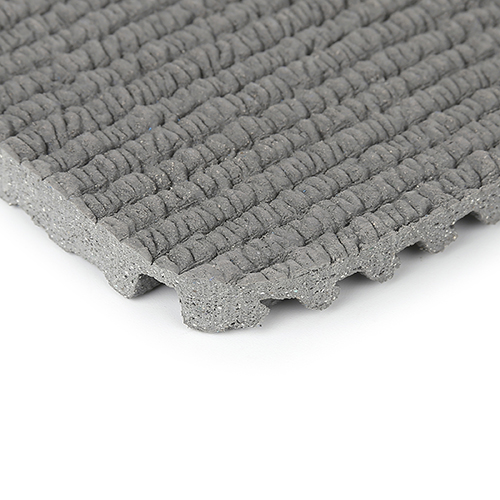12月 . 04, 2024 15:42 Back to list
running track carpet
The Significance of Running Track Carpet in Athletics
Running track carpets have become an essential component of modern athletics, significantly influencing performance, safety, and the overall experience of both athletes and spectators. As technology in sports surfaces advances, understanding the role of running track carpets becomes crucial to appreciating their impact on track and field events. This article will delve into the various aspects of running track carpets, including their materials, benefits, and the future of athletics.
Evolution of Track Surfaces
Historically, running tracks were constructed from natural materials, such as cinders and dirt, which could vary significantly in texture and stability. Over the years, however, innovations in material science have paved the way for synthetic surfaces that enhance performance. The introduction of running track carpets, typically made from artificial turf, rubber, or polyurethane, has transformed track design and athlete training.
These modern surfaces offer a consistent texture and elasticity, reducing the risk of injury and improving performance. The development of synthetic tracks has led to an increase in world records and personal bests, as athletes can train and compete on surfaces that minimize energy loss during running.
Materials and Design
Running track carpets come in various materials, each with distinct properties that cater to different athletic needs. The most commonly used materials include
1. Polyurethane This is a popular choice for professional leagues and Olympic events. Polyurethane carpets provide excellent shock absorption, enhancing comfort while reducing the likelihood of injuries. They are designed to promote optimal traction, allowing athletes to accelerate quickly and maintain speed throughout their races.
2. Rubber Rubber surfaces are often used in local facilities and training tracks. They are durable, weather-resistant, and offer a degree of cushion that helps in reducing fatigue over long distances. Rubber tracks can also be recycled, making them an environmentally friendly option.
3. Artificial Turf While primarily used for sports like soccer and field hockey, certain types of artificial turf can be utilized in running tracks. They offer a soft surface for sprinting and can be designed with varying tuft heights to provide different levels of support and cushioning.
The design of running track carpets also plays a significant role in their functionality. Many tracks feature multiple lanes with distinctive markings that adhere to international competition standards. The layout and the colors used can also enhance visibility for both participants and spectators.
running track carpet

Benefits of Running Track Carpets
The advantages of running track carpets extend beyond just materials and design. Here are a few key benefits
1. Injury Prevention Running on a soft, cushioned surface minimizes impact stress on joints, which is crucial for preventing injuries, especially for long-distance runners and sprinters.
2. Enhanced Performance The right surface can help athletes maintain speed and improve their overall performance. The energy return provided by high-quality carpets ensures that runners exert less effort while achieving maximum output.
3. Weather Resistance Unlike natural surfaces, running track carpets are designed to withstand various weather conditions. This means athletes can train and compete more consistently year-round, regardless of rain, wind, or extreme temperatures.
4. Aesthetic Appeal Vibrant colors and designs on running tracks enhance the visual appeal of athletic facilities, making them more inviting for both athletes and spectators. Aesthetically pleasing environments can foster pride and motivation among teams and communities.
The Future of Running Track Carpets
As technology progresses, the future of running track carpets looks promising. Innovations in sustainable materials and maintenance-free surfaces are already on the horizon. Researchers are exploring biodegradable materials that will not only meet performance standards but also reduce the environmental impact of athletic facilities.
Moreover, with advancements in smart technology, future running tracks may incorporate features that monitor athletes' performance in real-time, providing valuable data to improve training regimens and enhance competitiveness.
In conclusion, running track carpets play a vital role in transforming how athletes train and compete. The evolution of materials and design has led to surfaces that not only enhance performance but also prioritize safety. As the industry continues to innovate, running track carpets will undoubtedly remain a central element in the world of athletics, supporting athletes in their pursuit of excellence.
-
Professional Tennis Court Lining Services Pickleball Court Marking Experts
NewsJun.24,2025
-
Pickleball Court for Sale - Premium Flooring Solutions for Sports Venues
NewsJun.10,2025
-
Maple Grove Outdoor Pickleball Courts - Premium Conversion & Durable Materials
NewsJun.10,2025
-
Best Pickleball Outdoor Courts Solutions Convert Tennis Courts, Outdoor Covered Courts, Maple Grove Options
NewsJun.10,2025
-
Convert Tennis Court to Pickleball Fast & Affordable
NewsJun.09,2025
-
Indoor Outdoor Pickleballs Durable & All-Weather for Any Court Play
NewsJun.09,2025

